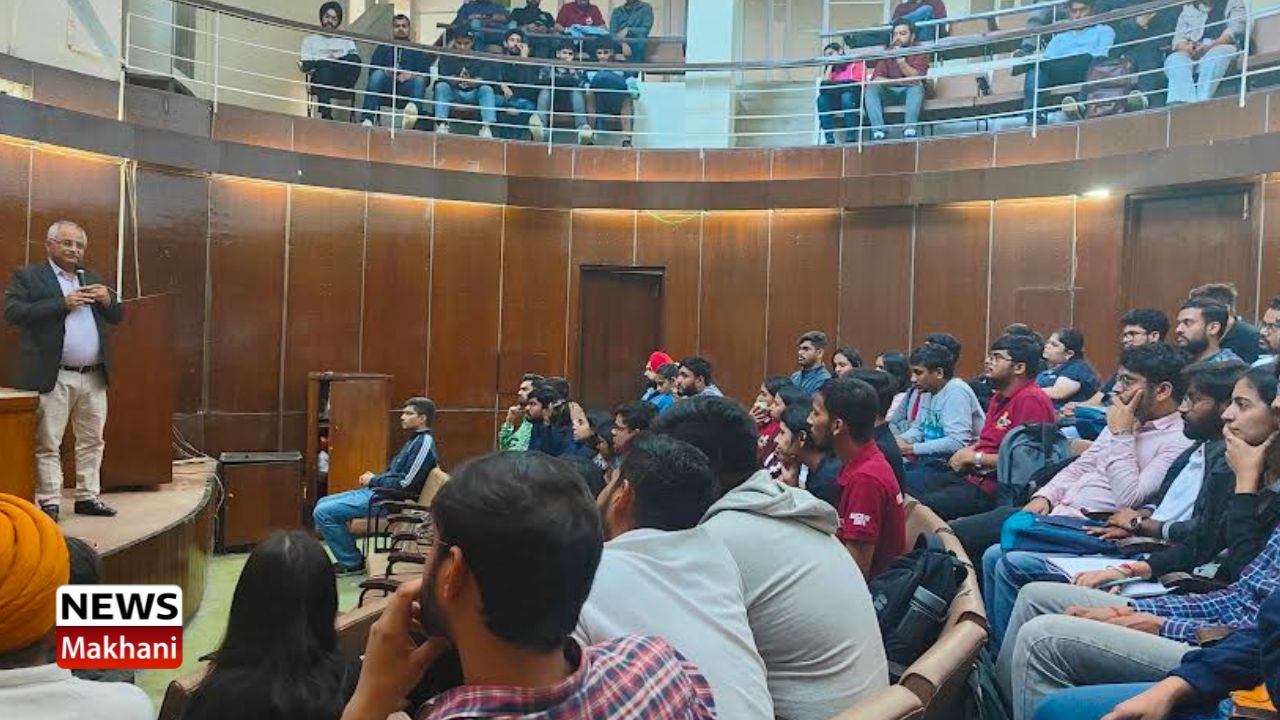Chandigarh November 16, 2022 :-
According to the Global Burden of Diseases, air pollution is a major risk factor for health issues. In the 21st century, many cities around the globe are seeing a significant rise in high outdoor pollution. Many Indian cities have poor air quality, which is a serious concern for public health. Recently, Chandigarh city, situated in the Indo-Gangetic Plain, also recorded very poor air quality, even worse than Delhi, for a few days. Chandigarh, the first planned city of India, whose focus remains on urban greenery, was also included in the non-attainment cities under National Clean Air Program.
High levels of air pollution in cities increase people’s susceptibility to heart, lung and other respiratory illnesses, including mental health. India has launched many schemes and policies at the multi-sectoral level to reduce air pollution. Community perceptions play a vital role in determining how individuals respond to air pollution and related policies. Therefore, understanding people’s level of consciousness, actions, and attitudes toward air pollution is necessary.
Considering this, Prof. Ravindra Khaiwal from Post Graduate Institute of Medical Education and Research (PGIMER), Chandigarh, and Ms. Pooja Parihar, and Dr. Suman Mor, Department of Environment Studies, examined the community perception of air pollution, willingness to pay and awareness about health risks in Chandigarh based on a questionnaire based-survey. The study is recently published in Environmental Challenges, a reputed peer-reviewed international journal by Elsevier.
This study used a questionnaire to assess the levels and correlations between people’s perceptions of air pollution and its associated health risk before and during COVID-19. The study highlights that 80% of respondents were aware and worried about the city’s air quality. 55 % of study participants believed that pollution levels increase as the day progresses, especially in the afternoon. The perception of automobile emissions as the prime source of air pollution was reported by 40% of study participants, in addition to mentioned other sources such as industrial pollution, dust, agricultural emissions, aviation emissions, etc. On assessing the air quality perception and respondent’s happiness as a place to live, participants’ happiness was found to be strongly correlated with their neighborhood as a place to live with their opinion of the air quality.
The study also evaluated the relationship between socio-demographic characteristics and people’s awareness of air pollution, attitudes, and health implications. Respondents in the younger age group were found to be more aware of air pollution. This might be because younger people living in cities or working in factories are exposed to poor air quality Respondents believed that air pollution exposure is associated with respiratory and chest disorders. A linear correlation was established between people’s willingness to improve air quality and their awareness. The attitudes and behaviors of individuals toward air pollution revealed that they were willing to pay to reduce air pollution.
Prof. Ravindra Khaiwal, Department of Community Medicine and School of Public Health, Post Graduate Institute of Medical Education and Research (PGIMER), Chandigarh, mentioned that community perceptions play a vital role in the understanding of people’s level of knowledge and attitudes towards air pollution, which can be used for effective policy-making having community participation and acceptance.
Dr. Suman Mor, Associate Professor, Department of Environment Studies, Panjab University, Chandigarh, highlighted that 25% of participants responded that the internet/social media is the most effective means to educate the public about air pollution. She added that the public perception of risk is crucial because it influences policy-making directly. Dr Mor mentioned that if policymakers understand how the audience sees air pollution, they will be better equipped to develop and implement policies and programs that promote public health and well-being.
The study reported that people’s perception of air pollution and health effects was more significant during pre-COVID than during COVID-19. Prof Khaiwal mentioned that this might be because people believed that the level of air pollution decreased during the COVID-19-related lockdown. To mitigate air pollution, many policies have been implemented in the country; but without involving people. However, it is not possible to combat the problem of air pollution without citizen engagement. Hence, understanding the population’s knowledge, attitude, and perception (KAP) will be the key to refining and implementing the National Clean Air Programme (NCAP) in India, which aims to reduce 40-60% of particulate pollution in non-attainment cities by 2024-26.

 हिंदी
हिंदी






